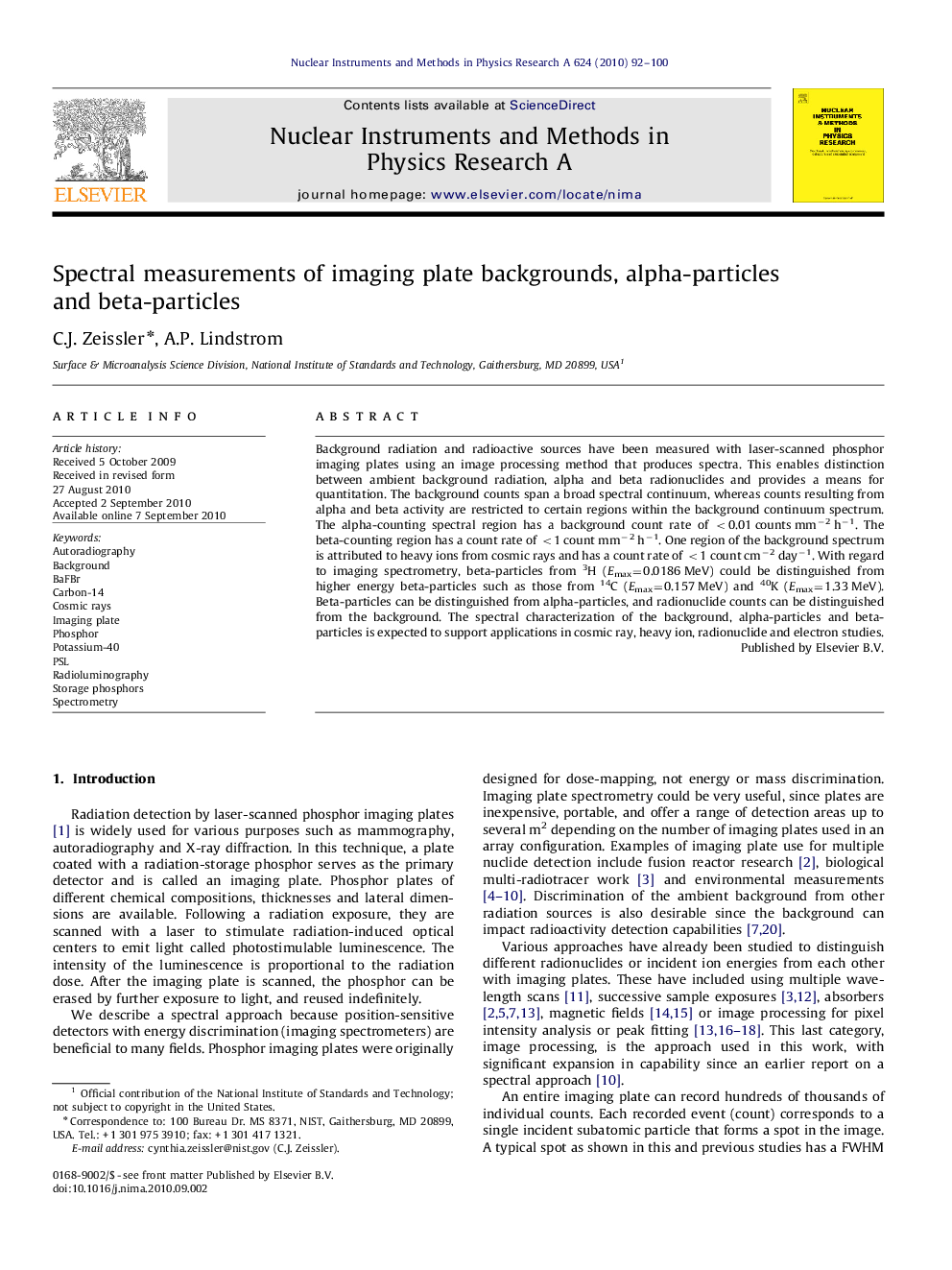| Article ID | Journal | Published Year | Pages | File Type |
|---|---|---|---|---|
| 1825976 | Nuclear Instruments and Methods in Physics Research Section A: Accelerators, Spectrometers, Detectors and Associated Equipment | 2010 | 9 Pages |
Background radiation and radioactive sources have been measured with laser-scanned phosphor imaging plates using an image processing method that produces spectra. This enables distinction between ambient background radiation, alpha and beta radionuclides and provides a means for quantitation. The background counts span a broad spectral continuum, whereas counts resulting from alpha and beta activity are restricted to certain regions within the background continuum spectrum. The alpha-counting spectral region has a background count rate of <0.01 counts mm−2 h−1. The beta-counting region has a count rate of <1 count mm−2 h−1. One region of the background spectrum is attributed to heavy ions from cosmic rays and has a count rate of <1 count cm−2 day−1. With regard to imaging spectrometry, beta-particles from 3H (Emax=0.0186 MeV) could be distinguished from higher energy beta-particles such as those from 14C (Emax=0.157 MeV) and 40K (Emax=1.33 MeV). Beta-particles can be distinguished from alpha-particles, and radionuclide counts can be distinguished from the background. The spectral characterization of the background, alpha-particles and beta-particles is expected to support applications in cosmic ray, heavy ion, radionuclide and electron studies.
